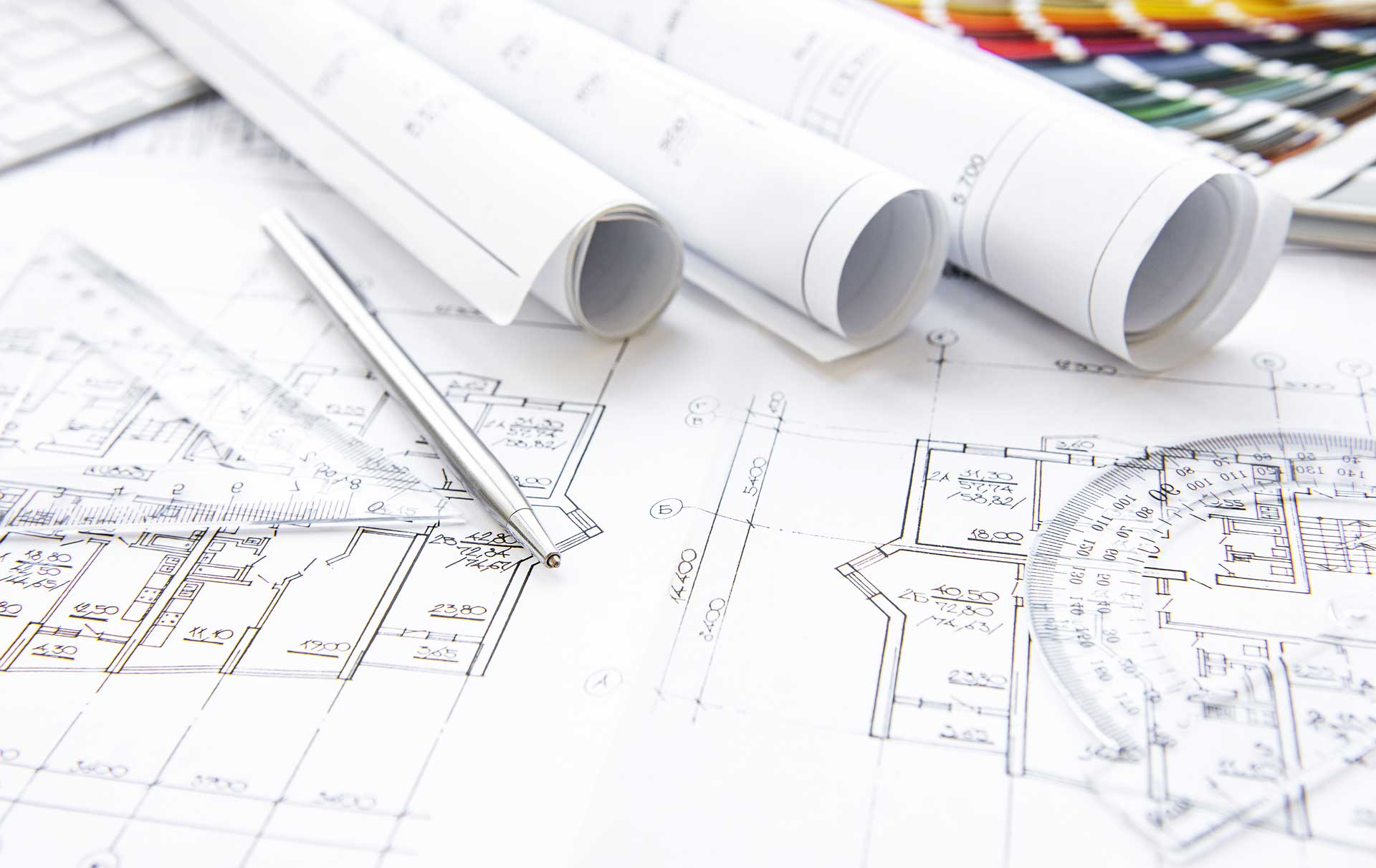Home>diy>Building & Construction>What Is Overhead And Profit In Construction


Building & Construction
What Is Overhead And Profit In Construction
Modified: February 25, 2024
Learn what overhead and profit mean in the context of building construction, and how they can impact the overall cost and success of your project.
(Many of the links in this article redirect to a specific reviewed product. Your purchase of these products through affiliate links helps to generate commission for Storables.com, at no extra cost. Learn more)
Introduction
Welcome to the world of construction, where every detail matters and every decision impacts the outcome of a project. In this industry, understanding the concepts of overhead and profit is crucial to the success of any construction venture. These two elements play a significant role in the financial aspects of a project, and having a firm grasp on their meaning and calculation is essential for construction professionals.
Overhead and profit are commonly discussed terms in the construction realm, but their definitions and implications may vary depending on the context. This article aims to provide a comprehensive insight into the concepts of overhead and profit in construction, their importance, and how they interrelate.
Construction projects involve a wide range of costs and expenditures, which are typically classified into direct costs and indirect costs. Direct costs are those directly associated with the labor, materials, and equipment required to complete the project. Indirect costs, on the other hand, relate to the overhead expenses necessary to keep the construction company operational and profitable.
The overhead costs of a construction project include various expenses not directly tied to the production of goods or services but are necessary for the overall operation of the business. These costs can include office rent, utilities, insurance, taxes, office supplies, and employees’ salaries who work in administrative roles.
Profit, on the other hand, is the financial gain earned from a successful construction project. It is the difference between the revenue generated from the project and the expenses incurred, including both direct costs and overhead costs. Profit is what enables construction companies to grow, invest in new technologies, and sustain their business in the long run.
Understanding and managing overhead and profit are critical to ensure the financial viability of a construction project. Calculating and allocating overhead costs accurately is essential to ensure that these expenses are appropriately accounted for in the project’s budget. Similarly, determining the appropriate profit margin is vital for businesses to cover their overhead costs, maintain healthy cash flow, and generate sustainable profits.
In the following sections, we will delve deeper into the specific aspects of overhead and profit in construction, exploring their components, significance, calculations, and strategies for effective management. By the end of this article, you will have a clear understanding of how overhead and profit impact construction projects and how to optimize these factors for successful project outcomes.
Key Takeaways:
- Understanding the intricate relationship between overhead and profit is crucial for construction professionals to ensure proper cost recovery, set competitive pricing, and maintain healthy profit margins, ultimately supporting business growth and sustainability.
- Effective strategies such as accurate cost estimation, streamlined operations, efficient resource allocation, robust cost control measures, and investment in technology and training are essential for construction professionals to manage overhead and profit, optimize financial outcomes, and achieve long-term success in the industry.
Read more: What Is Considered Overhead In Construction
Definition of Overhead in Construction
In the construction industry, overhead refers to the indirect costs incurred by a construction company to support its operations. These costs are not directly tied to specific construction activities but are necessary for the overall functioning of the business. Overhead expenses are essential for the smooth execution of projects and maintaining the efficiency and effectiveness of the construction company as a whole.
Overhead costs fall into various categories, including administrative expenses, general expenses, and job-related expenses. Administrative expenses include salaries and benefits for office staff, office rent, utilities, insurance, taxes, and office supplies. General expenses, such as marketing and advertising, professional fees, training and development, and equipment maintenance, are also part of overhead costs. Job-related expenses, which can vary depending on the nature of the project, include temporary facilities, safety equipment, project management tools, and legal and permit fees.
Understanding and accurately calculating overhead costs is crucial for construction companies, as they directly affect the overall project budget and profitability. These costs need to be appropriately allocated to each project to ensure that they are adequately covered and do not create a financial burden. Failing to account for overhead expenses can lead to underestimated project costs, cash flow issues, and potential loss of profit.
Overhead costs in construction can be categorized into two types: fixed overhead costs and variable overhead costs. Fixed overhead costs are expenses that remain constant regardless of the volume of work being performed. These costs include office rent, utilities, and salaries of permanent office staff. Variable overhead costs, on the other hand, are expenses that fluctuate based on the level of construction activity. Materials for temporary structures, site utilities, and project-specific insurance costs are examples of variable overhead costs.
Construction companies typically calculate overhead costs as a percentage of direct costs or as a percentage of the total project cost. The percentage used may vary depending on factors such as the size and complexity of the project, the region in which the project is located, and the company’s specific overhead structure. Properly estimating and allocating overhead costs allows construction companies to accurately determine the total project cost, ensuring that the project’s profitability is maintained.
Components of Overhead Costs
Overhead costs in construction encompass a variety of expenses necessary for the smooth operation of a construction company. These costs can be broken down into several components that contribute to the overall overhead expenditure. Understanding these components is essential for accurately estimating and managing overhead costs in construction projects. Let’s explore the key components of overhead costs:
- Administrative Expenses: These expenses include the salaries and benefits of office personnel, such as managers, accountants, and administrative staff. It also incorporates rent for office space, utilities, office supplies, insurance premiums, taxes, and other administrative overheads necessary for the day-to-day operation of the construction company.
- General Expenses: This component includes costs that are not directly associated with a specific construction project but are essential for the overall functioning of the company. Examples of general expenses include marketing and advertising costs, professional fees, employee training and development, equipment maintenance and repairs, licenses and permits, and membership dues for industry associations.
- Job-Related Expenses: These expenses are specific to individual construction projects and can vary depending on the nature and scope of the work. Job-related overhead costs include temporary facilities and equipment needed on-site, safety equipment and measures, project management tools, project-specific insurance fees, legal and permitting fees, and any other expenses directly related to the execution of the project.
- Equipment Costs: Construction companies often have a fleet of machinery and equipment that is essential for project execution. The costs associated with the acquisition, maintenance, and depreciation of the equipment are considered as part of the overhead expenses. This includes the cost of purchasing or leasing equipment, fuel and maintenance expenses, repairs and upgrades, as well as insurance coverage for the equipment.
- Supervision and Support: Another component of overhead costs is the salaries and benefits of project managers, supervisors, and support staff who oversee the construction projects but are not directly involved in the labor and production activities. This includes the cost of experienced project managers, estimators, schedulers, and administrative support personnel who assist in the coordination, planning, and documentation of the construction projects.
It is important for construction companies to accurately assess these components to determine the total overhead costs. By properly allocating the overhead expenses to each project, companies can ensure that these costs are adequately covered in the project budget. Failure to account for overhead costs can result in significant financial setbacks and impact the overall profitability of the construction company.
Importance of Overhead in Construction Projects
Overhead costs play a crucial role in the success and profitability of construction projects. Understanding the importance of overhead in construction is essential for construction professionals to effectively manage their projects and ensure financial viability. Here are some key reasons why overhead is important in construction projects:
- Accurate Project Cost Estimation: Properly accounting for overhead costs allows construction companies to estimate the total cost of a project more accurately. By including all necessary overhead expenses, such as administrative costs, general expenses, job-related expenses, and equipment costs, in the project budget, companies can avoid underestimating the overall project cost. This ensures that the company is adequately compensated for their expenses and increases the likelihood of making a profit.
- Ensuring Cost Recovery: Overhead costs are necessary for the day-to-day operation of a construction company. By allocating these costs to each project, companies can ensure that they are being properly recovered. Failing to cover overhead expenses could result in financial strain and potentially lead to project delays or abandonment. Properly estimating and recovering overhead costs is crucial for the sustainability and growth of a construction business.
- Supporting Business Operations: Overhead expenses are associated with the smooth functioning of a construction company beyond the scope of individual projects. Administrative expenses, general expenses, and supervision and support costs are all crucial for the efficient operation of the company as a whole. These costs cover essential activities like office rent, utilities, salaries for administrative personnel, marketing efforts, staff development, and equipment maintenance. Neglecting these overhead expenses can have a detrimental impact on the overall business operations.
- Investment in Infrastructure: Overhead costs also enable construction companies to invest in necessary infrastructure and technology to improve their capabilities and competitiveness. By allocating funds for equipment, software, training, and other resources, companies can enhance their efficiency, quality, and productivity. This investment in infrastructure helps construction companies stay at the forefront of industry advancements and meet the evolving needs of clients.
- Long-Term Sustainability: Successful management of overhead costs is vital for the long-term sustainability of a construction business. By accurately estimating and recovering these expenses, companies can maintain healthy cash flow, meet financial obligations, and generate sustainable profits. Proper budgeting and allocation of overhead costs also provide a clear picture of the company’s financial health and performance, facilitating strategic decision-making and growth planning.
Understanding the importance of overhead costs in construction projects is crucial for construction professionals. By carefully considering these expenses and factoring them into project estimates and budgets, companies can improve their financial management, enhance project outcomes, and ensure the long-term success of their business.
Calculation of Overhead Costs
Accurately calculating overhead costs in construction is essential for determining the total project cost and ensuring that these expenses are adequately covered. Construction companies employ various methods to calculate overhead costs, depending on their specific business model and industry practices. Here are some common approaches used to calculate overhead costs:
- Percentage of Direct Costs: One common method is to calculate overhead costs as a percentage of the direct costs incurred in a construction project. This percentage is typically based on historical data or industry standards. For example, if the expected direct costs of a project are $100,000, and the overhead percentage is set at 20%, the overhead costs would be calculated as $20,000 ($100,000 x 20%). This approach allows companies to allocate a predetermined portion of overhead expenses directly to each project.
- Percentage of Total Project Costs: Another method is to calculate overhead costs as a percentage of the total project costs. In this approach, the overhead percentage is applied to the entire project cost, including both direct and indirect expenses. For instance, if the total project cost is estimated to be $200,000, and the overhead percentage is 15%, the overhead costs would be $30,000 ($200,000 x 15%). This method provides a holistic view of the project’s overhead expenses.
- Activity-Based Costing: Activity-based costing (ABC) is a more refined approach for calculating overhead costs, which involves identifying and categorizing specific activities in a construction project. Each activity is assigned a corresponding cost driver, which reflects the resources consumed by that activity. These cost drivers can include factors such as labor hours, equipment usage, or materials consumed. By accurately tracking these activities and associated cost drivers, construction companies can allocate overhead costs based on the actual resources utilized in each project. This method provides a more accurate and project-specific calculation of overhead costs.
- Job Costing: Job costing is a detailed approach to calculate overhead costs that involves analyzing the specific requirements and demands of each construction project. The costs associated with indirect activities, such as project management, supervision, and administrative tasks, are allocated based on the estimated time and effort spent on each project. This method requires a thorough assessment of the project’s scope, complexity, and resource utilization to ensure that overhead costs are accurately accounted for in each job.
It is important for construction companies to regularly review and refine their methods for calculating overhead costs to ensure accuracy and relevance. Indirect costs may vary over time due to changes in market conditions, business growth, or fluctuations in expenses. By continuously evaluating and adjusting their overhead cost calculations, construction companies can maintain a clear understanding of their expenses and make informed decisions to optimize project profitability.
Read more: What Is A Good Profit Margin In Construction
Definition of Profit in Construction
In the construction industry, profit refers to the financial gain achieved by a construction company from successfully completing a project. It is the difference between the revenue generated from the project and the total expenses, including both direct costs and overhead costs. Profit is an essential element for the sustainability and growth of construction businesses, allowing them to reinvest in operations, expand their capabilities, and generate returns for stakeholders.
Profits in construction represent the rewards earned for the risks taken and the value provided by the construction company. It is the surplus amount remaining after all project costs, including labor, materials, subcontractors, equipment, administrative expenses, and overhead costs, have been deducted from the total revenue generated from the project.
Construction companies generate profit by effectively managing their construction projects, controlling costs, and delivering quality projects within budget and schedule. Profit is not only an indicator of financial success but also a measure of the company’s ability to deliver value and meet client expectations.
There are different types of profit commonly discussed in the construction industry:
- Gross Profit: Gross profit is the profit earned after deducting the direct costs associated with a project from the revenue generated. It includes the costs of labor, materials, subcontractors, and any other expenses directly tied to the construction activities. Gross profit is a fundamental measure of a project’s profitability and gives an indication of how efficiently direct project costs are managed.
- Net Profit: Net profit is the profit earned after deducting not only the direct costs but also the overhead costs associated with running the construction company. It reflects the overall financial performance of the company, accounting for both project-specific expenses and the broader operating expenses. Net profit is a vital measure of the company’s financial health and its ability to cover all costs and generate sustainable returns.
- Profit Margin: Profit margin is the percentage of profit earned in relation to the total revenue. It is calculated by dividing the net profit by the total revenue and multiplying the result by 100. Profit margin is a measure of the company’s profitability and is often used to evaluate its financial performance and compare it to industry benchmarks.
Profit is an essential aspect of construction projects as it provides the resources necessary for business growth, innovation, and investment. It allows construction companies to attract and retain talented employees, upgrade their equipment and technology, expand into new markets, and weather economic downturns. Generating consistent profits is important for sustaining the business and ensuring its long-term success.
When negotiating a construction contract, be sure to include a clear definition of what is considered overhead and profit. This will help avoid misunderstandings and disputes down the line.
Factors Affecting Profit Margin
In the construction industry, profit margin is a crucial metric that reflects the financial performance and profitability of a construction company. Profit margin is influenced by various factors, both internal and external, that can impact the company’s ability to generate and maintain healthy profit margins. Understanding these factors is essential for construction professionals to effectively manage their projects and optimize their financial outcomes. Here are key factors affecting profit margin in the construction industry:
- Project Size and Complexity: The size and complexity of a construction project can significantly impact profit margin. Large-scale and complex projects often require more resources, increased manpower, specialized equipment, and technical expertise. These factors can result in higher direct costs and overhead expenses, causing profit margins to be smaller. Construction companies need to carefully analyze the project requirements and ensure that the estimated profit margins align with the risks and challenges associated with the project.
- Contract Type and Terms: The type of contract and its terms can have a significant impact on profit margin. Different types of contracts, such as fixed-price contracts, cost-plus contracts, or design-build contracts, have varying levels of risk and potential profit. Contract terms, including payment schedules, change order provisions, and warranty obligations, can also affect profit margins. Construction companies need to carefully evaluate and negotiate contract terms to ensure that profit margins are not compromised by unfavorable conditions.
- Material Costs and Price Fluctuations: Fluctuations in material costs can directly influence profit margin in construction projects. Price fluctuations of construction materials, such as steel, cement, and lumber, can impact the overall project cost. Unanticipated increases in material prices can lead to cost overruns, potentially reducing profit margins. Construction companies need to closely monitor material costs, secure favorable pricing contracts, and adapt their budgets accordingly to mitigate the impact of price fluctuations.
- Labor Productivity and Availability: Labor costs constitute a significant portion of construction project expenses. The productivity and availability of skilled labor can affect profit margins. Shortages of skilled workers or low productivity levels can lead to project delays, increased labor costs, and potential profit erosion. Construction companies must prioritize workforce planning, invest in training and development programs, and foster efficient work practices to optimize labor productivity and maintain healthy profit margins.
- Market Conditions and Competition: Market conditions and competition can influence profit margins in the construction industry. In highly competitive markets, construction companies may face price pressure, leading to lower profit margins. Economic fluctuations, industry trends, and client demands can also impact the overall pricing and profitability of construction projects. Companies need to assess market conditions, analyze competitors’ pricing strategies, and differentiate themselves by providing unique value to maintain favorable profit margins.
- Operational Efficiency: The efficiency of construction operations directly impacts profit margins. Streamlining processes, improving project management practices, reducing waste and rework, and leveraging technology can enhance operational efficiency, leading to higher profit margins. Emphasizing continuous improvement, adopting lean construction principles, and optimizing resource allocation are essential for maximizing profitability.
Construction companies need to carefully consider these factors and develop strategies to mitigate risks, optimize costs, and enhance operational efficiency to maintain healthy profit margins. Regular evaluation of these factors and proactive management can support sustainable profitability and business growth in the construction industry.
Importance of Profit in Construction Projects
Profit is a vital aspect of construction projects as it directly impacts the financial sustainability and growth of construction companies. Understanding the importance of profit in construction projects is essential for construction professionals to effectively manage their projects, make informed decisions, and ensure long-term success. Here are key reasons why profit is important in construction projects:
- Business Continuity and Growth: Profit is crucial for the continuity and growth of a construction company. It provides the financial resources necessary to cover operating expenses, invest in new technologies and equipment, expand into new markets, and pursue business opportunities. Profit allows construction companies to maintain financial stability, withstand economic downturns, and position themselves for future growth.
- Rewarding Entrepreneurial Risk: Construction projects involve inherent risks, including fluctuations in material costs, labor productivity challenges, project delays, and unforeseen circumstances. Profit is the reward for the entrepreneurial risks taken by construction companies. It compensates for the uncertainties and potential losses associated with undertaking construction projects and provides a return on investment for stakeholders.
- Innovation and Adaptation: Profitability enables construction companies to invest in innovation and adapt to evolving industry trends and client demands. It provides the financial means to explore new technologies, implement sustainable practices, and improve construction methods. Profit supports research and development efforts, leading to improved efficiency, quality, and competitiveness in construction projects.
- Attracting and Retaining Talent: Profitability plays a vital role in attracting and retaining skilled professionals in the construction industry. It allows construction companies to offer competitive salaries, benefits, and career development opportunities to attract top talent. Well-compensated employees are motivated to perform their best, contribute to project success, and drive innovation, ultimately leading to higher quality outcomes and increased profitability.
- Financial Stability and Flexibility: Profit provides the financial stability and flexibility required to navigate uncertainties in the construction industry. It helps construction companies build cash reserves, repay debts, and meet financial obligations. Profit allows businesses to respond quickly to market fluctuations, invest in new projects, and take advantage of strategic opportunities.
- Client Confidence and Reputation: Profitability is closely tied to the ability to consistently deliver successful construction projects. Profitable companies have the resources to deliver projects on time, within budget, and to a high standard of quality. This builds client confidence and enhances the company’s reputation, leading to repeat business, positive referrals, and a competitive edge in the marketplace.
Profit is not just a financial metric; it is an indicator of the company’s ability to create value, manage risks, and deliver successful construction projects. It allows construction companies to reinvest in their operations, foster innovation, attract top talent, and maintain a strong financial foundation. By prioritizing profitability, construction professionals can ensure the long-term success and sustainability of their businesses in a challenging and dynamic industry.
Calculation of Profit Margin
Calculating profit margin is a vital aspect of financial analysis in the construction industry. Profit margin is a key metric that indicates the profitability and financial performance of a construction company. It is calculated by determining the percentage of profit earned in relation to the total revenue generated. The profit margin reflects the company’s ability to generate returns on its investment and cover both direct and indirect expenses. Here is how profit margin is calculated in construction:
The formula for calculating profit margin is:
Profit Margin = (Net Profit / Total Revenue) x 100
To calculate profit margin effectively, construction companies need to determine both net profit and total revenue. Here are the steps involved in the calculation:
- Net Profit: Net profit is the final profit earned after deducting all project costs, including direct costs and indirect expenses (overhead costs). It represents the surplus remaining after covering all expenses. Net profit is typically calculated as:
- Total Revenue: Total revenue is the sum of all the revenue generated from construction projects, including any additional income from other sources, such as equipment rentals or consulting services. Total revenue is the gross income earned by the company from its operations.
- Profit Margin Calculation: After calculating net profit and total revenue, the profit margin can be calculated by dividing the net profit by the total revenue and multiplying the result by 100. This provides the profit margin as a percentage.
Net Profit = Total Revenue – Direct Costs – Overhead Costs
Profit Margin = (Net Profit / Total Revenue) x 100
The resulting profit margin percentage indicates the company’s profitability relative to its revenue. A higher profit margin indicates that the company is generating more profit relative to its sales, while a lower profit margin suggests lower profitability.
Profit margin calculation is crucial for assessing the financial health of a construction company, evaluating the success of individual projects, and comparing performance against industry benchmarks. It provides insights into the company’s ability to control costs, manage overheads, and generate sustainable returns.
Construction companies should regularly review and analyze their profit margins to identify areas for improvement, make informed decisions regarding future projects, and ensure the long-term financial viability of their business. By maximizing profit margins through effective cost control, efficient operations, and strategic pricing, construction companies can enhance profitability, drive growth, and build a strong foundation for their future success.
Read more: What Type Of Construction Is Most Profitable
Relationship Between Overhead and Profit in Construction
In the construction industry, overhead and profit are interconnected aspects of a construction project’s financial landscape. Understanding the relationship between overhead and profit is crucial for construction professionals to effectively manage their projects and optimize financial outcomes. Let’s explore the relationship between overhead and profit in construction:
Overhead Costs: Overhead costs are the indirect expenses incurred by a construction company to support its operations. These costs include administrative expenses, general expenses, job-related expenses, equipment costs, and supervision and support costs. Overhead costs are necessary for the smooth functioning of the business beyond the scope of individual projects. Examples of overhead expenses include office rent, utilities, salaries of administrative staff, marketing expenses, equipment maintenance, and project management tools.
Profit: Profit, in the context of construction, is the financial gain earned by a construction company from successfully completing a project. It is the difference between the revenue generated from the project and the total expenses, including both direct costs and overhead costs. Profit is a measure of the company’s financial success and serves as a reward for the risks taken and the value provided by the construction company.
Interrelation: Overhead costs directly impact profit in construction projects. By allocating and managing overhead costs effectively, construction companies can directly influence their profit margins. Here are a few key aspects of the relationship between overhead and profit:
- Cost Recovery: Overhead costs need to be properly allocated and recovered to ensure that they do not become a burden on the company. By accurately estimating and accounting for overhead costs in project budgets, construction companies can ensure proper cost recovery and safeguard profit margins. Failure to recover overhead costs adequately can lead to reduced profitability and financial difficulties.
- Project Budgeting: Overhead costs contribute to the overall project budget and need to be factored in during the estimation stage. When overhead costs are underestimated or overlooked, the project budget may fall short, resulting in a squeeze on profit margins. Properly accounting for overhead expenses ensures that the project budget accurately reflects the true cost of completing the project, allowing for realistic profit expectations.
- Profit Margin Calculations: Overhead costs are part of the overall project expenses used in the calculation of profit margin. Profit margin is a key metric that indicates the profitability of a project or the overall financial health of the company. By accurately accounting for overhead costs in profit margin calculations, construction companies can gauge the viability and success of their projects.
- Target Profitability: Managing overhead costs is crucial for achieving the desired profit margin. Construction companies need to assess and control overhead expenses to align them with the targeted profit margins. Effective overhead cost management allows companies to set competitive pricing, maintain healthy profit margins, and ensure the financial sustainability of the business.
- Balancing Overhead and Profit: Balancing overhead costs with profit is a critical aspect of construction project management. While it is important to control overhead expenses to maximize profitability, it is equally crucial to invest in necessary overhead items that contribute to the success of the project and the long-term growth of the company. Striking the right balance ensures that overhead costs are adequately covered, while profit margins remain healthy.
By understanding and managing the relationship between overhead and profit in construction projects, construction professionals can optimize financial outcomes, ensure project profitability, and achieve long-term success in the industry.
Strategies for Managing Overhead and Profit in Construction
Managing overhead and profit is crucial for the success and profitability of construction projects. Effective management of these factors requires careful planning, efficient operations, and strategic decision-making. Here are some strategies for managing overhead and profit in construction:
- Accurate Cost Estimation: Properly estimating and accounting for both direct costs and overhead costs is vital to ensure that project budgets are accurate and comprehensive. Conduct a thorough analysis of project requirements, review historical data, and include all relevant overhead expenses in the cost estimation process. Accurate cost estimation lays the foundation for managing overhead and achieving desired profit margins.
- Streamline Operations: Improving operational efficiency helps minimize costs and maximize profit margins. Streamlining construction processes, such as project management, scheduling, procurement, and document management, reduces errors, eliminates waste, and optimizes resource utilization. Invest in technology, automation, and lean construction practices to enhance operational efficiency and drive profitability.
- Effective Resource Allocation: Optimal resource allocation is critical for managing overhead and profit. Efficiently assign labor, equipment, and materials to each project, taking into account project requirements, availability, and cost-effectiveness. Avoid overstaffing or underutilizing resources, as both scenarios can impact profit margins. Regularly monitor resource allocation to ensure optimal usage and control overhead expenses.
- Negotiate Vendor and Supplier Contracts: Carefully negotiate contracts with vendors and suppliers to obtain favorable pricing and terms. Building strong relationships with reliable suppliers can lead to cost savings, volume discounts, and better credit terms. Consistently review and assess supplier performance to ensure ongoing competitiveness and cost-effectiveness.
- Efficient Subcontractor Management: Effective subcontractor management is key to managing overhead and profit. Thoroughly evaluate subcontractor capabilities, track record, and pricing before awarding contracts. Establish clear communication channels, manage subcontractor performance, enforce quality standards, and monitor deliverables to ensure efficient subcontractor utilization and minimize cost overruns.
- Continuous Cost Control: Implement robust cost control measures throughout the project lifecycle. Monitor project expenses, compare actual costs against budgets, and take corrective actions as needed. Regularly review and analyze project financials to identify areas for cost reduction, optimize resource utilization, and proactively manage overhead expenses.
- Marketing and Business Development: Effective marketing and business development efforts contribute to increasing project opportunities, revenue streams, and profitability. Develop strong relationships with potential clients, stay informed about upcoming projects, and actively pursue new business opportunities. Marketing efforts should focus on promoting the company’s unique value proposition and competitive advantages to attract profitable projects.
- Invest in Technology and Training: Embrace technology and invest in training to enhance productivity and stay ahead of industry trends. Adopt construction management software, BIM technologies, and project tracking tools to improve efficiency, reduce errors, and streamline communication. Provide regular training and development programs for employees to enhance skills, productivity, and the ability to deliver quality work within budget and schedule.
- Monitor and Analyze Key Performance Indicators: Track and analyze key performance indicators (KPIs) related to overhead and profitability. Monitor KPIs such as profit margin, overhead rate, labor productivity, and project profitability. Regularly review financial reports, project progress, and performance metrics to identify areas for improvement, make informed decisions, and proactively manage overhead and profit.
By implementing these strategies, construction professionals can effectively manage overhead and profit, optimize project outcomes, and achieve long-term success in the construction industry. It is essential to continually review and refine these strategies based on changing market conditions, emerging technologies, and evolving business needs to ensure ongoing profitability and sustainable growth.
Conclusion
Managing overhead and profit is a critical aspect of the construction industry. Understanding the concepts, interrelationships, and strategies associated with overhead and profit is vital for construction professionals to ensure the financial viability and success of their projects and businesses.
Overhead costs encompass various indirect expenses necessary for the smooth operation of a construction company. These costs include administrative expenses, general expenses, job-related expenses, equipment costs, and supervision and support costs. Effectively managing overhead costs involves accurate cost estimation, streamlining operations, efficient resource allocation, and strategic vendor and subcontractor management.
Profit, on the other hand, represents the financial gain earned from successfully completing construction projects. It is the difference between the revenue generated and the total expenses, encompassing both direct costs and overhead costs. Profit is crucial for ensuring the continuity, growth, and innovation of construction businesses. Managing profit involves accurate cost estimation, continuous cost control, marketing and business development efforts, investment in technology and training, and monitoring key performance indicators.
The relationship between overhead and profit is intricate. Overhead costs directly impact profit margins, project budgets, and overall profitability. Accurately estimating and allocating overhead costs ensures proper cost recovery and helps set competitive pricing to maintain healthy profit margins. Balancing overhead costs with profit is crucial for sustaining financial stability and supporting business growth.
By implementing strategies such as accurate cost estimation, streamlined operations, efficient resource allocation, robust cost control measures, effective marketing and business development, technological advancements, and monitoring key performance indicators, construction professionals can effectively manage overhead and profit, optimize financial outcomes, and achieve long-term success.
In conclusion, understanding the concepts, interrelationships, and strategies associated with overhead and profit is vital for construction professionals. By effectively managing overhead and profit, construction companies can ensure financial viability, deliver successful projects, attract top talent, foster innovation, and thrive in a competitive industry.
Frequently Asked Questions about What Is Overhead And Profit In Construction
Was this page helpful?
At Storables.com, we guarantee accurate and reliable information. Our content, validated by Expert Board Contributors, is crafted following stringent Editorial Policies. We're committed to providing you with well-researched, expert-backed insights for all your informational needs.














0 thoughts on “What Is Overhead And Profit In Construction”